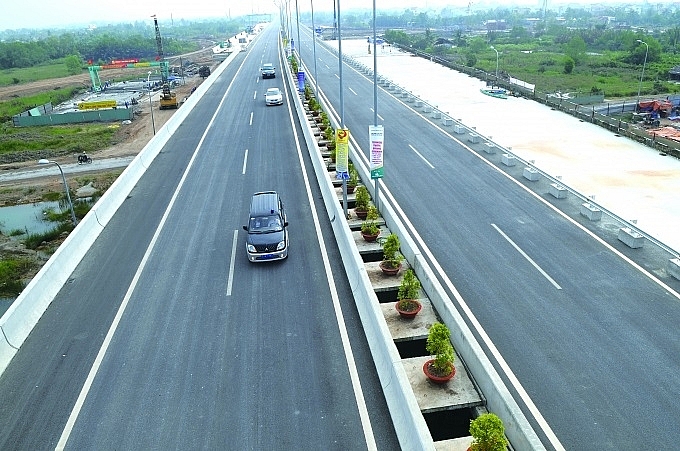Ministries muse PPP fund
 |
| Ministries muse PPP fund, illustration photo - source internet |
As shown in the recently-released first version of the draft Law on Public-Private Partnership (PPP) by the Ministry of Planning and Investment (MPI), the establishment of a fund for PPP project development is being proposed, with an aim to ensure the government’s counter-funding and provide guarantees for the ventures.
The proposal received agreement from seven among the 14 ministries, with the Ministry of Transport (MoT) and the State Audit of Vietnam (SAV) being among the supporters.
“We agreed with the proposal to establish a fund for PPP projects,” confirmed an MoT representative. “It has been one of the problems hindering transport PPP projects for years, such as the eastern cluster of the North-South expressway initiative, which is now calling for private investment in which to join.”
The ministries of Education and Training, Defence, Natural Resources and Environment, and Culture, Sports and Tourism, as well as the SAV supported the suggestion that the fund would be managed by the Ministry of Finance (MoF). The fund would support PPP projects in all development stages from preparation and the government’s counter-funding, to government guarantees and other state obligations. The fund would be allowed to mobilise funds from such sources as the state budget, government bonds, official development assistance, and proceeds from concession contracts of infrastructure assets.
In cities and provinces, the fund model could be developed from the merger of infrastructure investment funds, land development funds, and environment protection funds.
The proposal, however, met with some concerns from other ministries, driven by state budget constraints and possible inconsistencies with other prevailing laws.
At present, state budget funding in projects mostly comes from public investment. Thus the registration and allocation process must be in line with the Law on Public Investment. This causes inflexibility in capital allocation for PPP projects because of differences in usage purposes and the period of project development. Moreover, the expenditure process of the fund is also different with the Law on Public Investment.
An MoF source said, “It is necessary to have a new approach for PPP projects if we want to have a fund in which authority and expenditure do not follow the Law on Public Investment.”
Furthermore, the establishment of the fund meets with difficulty as under the Law on State Budget, funds that have a similar task of state budget spending are not allowed to be established.
Experiences in countries show that the establishment of a fund can be an important move. Canada is in possession of a PPP fund, managed by its finance ministry, with the cap of state support set at 25 per cent of construction cost.
South Korea also applies its Viability Gap Fund (VGF) mechanism, which sets the ceiling of the state contribution as support for construction and site clearance. Depending on the field, the state contribution can make up to a maximum of 30 per cent in road and seaport projects, and 50 per cent in railway projects, of the total investment capital.
Elsewhere the Philippines, Japan, and Mexico also boast similar funds, while China and India both apply the VGF mechanism.
In Vietnam, the state’s funding in PPP projects has been, for years, a special issue of concern among private and foreign investors when they join such projects in Vietnam.
So far the development of PPP ventures in many areas has proven less attractive and less successful due to the lack of a fund or mechanism. This is with the exception of the power sector, which has been able to attain successful foreign investment in build-operate-transfer projects.
Now, with the expected establishment of the PPP fund, a similar light can be switched on across other sectors. Transport, in particular, is looking forward to realisation of a fund along with other government guarantees to be ratified to lure private investors in the country’s key projects.
These include the eastern cluster of the North-South Expressway project, the Long Thanh International Airport initiative, the North-South highs-speed railway plan, and many more.
As scheduled, the draft law on PPP is expected to be submitted for National Assembly approval this October.
What the stars mean:
★ Poor ★ ★ Promising ★★★ Good ★★★★ Very good ★★★★★ Exceptional
Related Contents
Latest News
More News
- EVN launches major power infrastructure projects nationwide (December 19, 2025 | 18:17)
- VAL inaugurates second production line to meet domestic animal feed demand (December 19, 2025 | 16:37)
- Sun Group pioneers urban tram system in Phu Quoc (December 19, 2025 | 15:00)
- Seven major projects launched to drive Hanoi’s next growth phase (December 19, 2025 | 14:00)
- Securing capital and efficiency for Vietnam’s 2026-2030 growth ambitions (December 17, 2025 | 10:00)
- Vietnam bucking trend in the global M&A landscape (December 16, 2025 | 14:20)
- HDS Summit spotlights Vietnam’s rising role in regional supply chains (December 16, 2025 | 08:00)
- Kolon signs $48 million airbag supply deal with Autoliv (December 15, 2025 | 18:14)
- National Assembly approves Vinh–Thanh Thuy expressway project (December 15, 2025 | 18:02)
- Quang Tri green-lights $1.59 billion LNG-fired power project (December 15, 2025 | 17:59)

 Tag:
Tag:






















 Mobile Version
Mobile Version